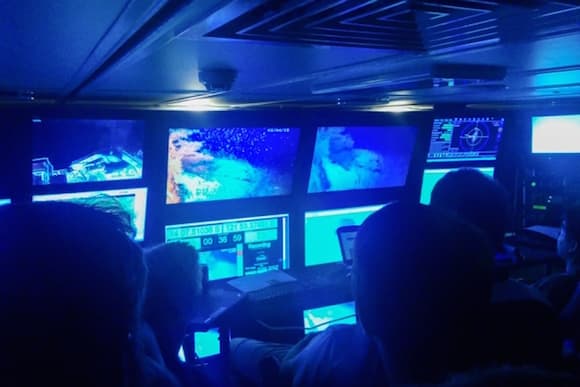Underwater Bots To Plan Their Own Missions - MIT Engineers
Most underwater bots in existence need a lot of spoon feeding i.e. an engineer developing them has to program every script and command required to launch and carry out a mission. Now, that is a tedious process and takes a lot of precious time. Therefore, a team of engineering researchers from MIT (Massachusetts Institute of Technology) has come together to develop underwater robots that have cognitive abilities. In that, they are able to chalk out their own missions and complete them successfully. Underwater robots are highly useful in monitoring sea beds, surveying marine habitats and tracking health of fauna under the water bodies. With the all new programming method introduced by MIT researchers, engineers will just have to command with high-level goals and the robot will use its own knowledge to achieve those goals.
Using its cognitive skills, these autonomous robots can explore a particular location within a given time constraint while maintaining orders such as keeping a safe distance from the sea floor. These bots will get to decide the order in which they will accomplish a task, how to tackle hindrances (if any) or recover from a failure on their own.

These unmanned underwater vehicles were designed in such a way that not only could they decide which missions to undertake, but also adapt and if needed use plan-b to complete them without any kinds of human intervention. Currently being called as an autonomous mission planning system by the MIT engineers, this system was tested on an underwater glider operating alongside a number of other autonomous vehicles. The robotic glider could modify its original mission plan to avoid hitting other vehicles and also prioritise its tasks by anticipating potential collisions with them.
Like most researchers these days, who rely heaving on sci-fi movies for their inspiration, this fleet of MIT roboticists drew theirs from Star Trek's famous Starship Enterprise, which has a top-down command center. Prof. Brian Williams from the aeronautics and astronautics department at MIT named their project 'Williams’ Enterprise system' after the famous movie.
He also divided the various components of the system into various decision makers which mimic the fictional starship crew. There's a captain, a navigator, a doctor or an engineer who each take up the task of making high level decisions, planning the route and diagnosing problems respectively.
The advantages of such a system are many. For instance -
1. The size of the team required to conduct such research and maintenance operations can be reduced.
2. Such bots could go ahead and explore places that aren't otherwise traversable.
3. With the necessity of human intervention gone, these bots become free to move to remote locations under the sea.
The new research work is indeed exciting and we look forward to what the team has to share in the days to come. What are your thoughts about underwater bots with cognitive abilities? Share with us in comments below.
Source: #-Link-Snipped-#
Using its cognitive skills, these autonomous robots can explore a particular location within a given time constraint while maintaining orders such as keeping a safe distance from the sea floor. These bots will get to decide the order in which they will accomplish a task, how to tackle hindrances (if any) or recover from a failure on their own.

Like most researchers these days, who rely heaving on sci-fi movies for their inspiration, this fleet of MIT roboticists drew theirs from Star Trek's famous Starship Enterprise, which has a top-down command center. Prof. Brian Williams from the aeronautics and astronautics department at MIT named their project 'Williams’ Enterprise system' after the famous movie.
He also divided the various components of the system into various decision makers which mimic the fictional starship crew. There's a captain, a navigator, a doctor or an engineer who each take up the task of making high level decisions, planning the route and diagnosing problems respectively.
The advantages of such a system are many. For instance -
1. The size of the team required to conduct such research and maintenance operations can be reduced.
2. Such bots could go ahead and explore places that aren't otherwise traversable.
3. With the necessity of human intervention gone, these bots become free to move to remote locations under the sea.
The new research work is indeed exciting and we look forward to what the team has to share in the days to come. What are your thoughts about underwater bots with cognitive abilities? Share with us in comments below.
Source: #-Link-Snipped-#
0

